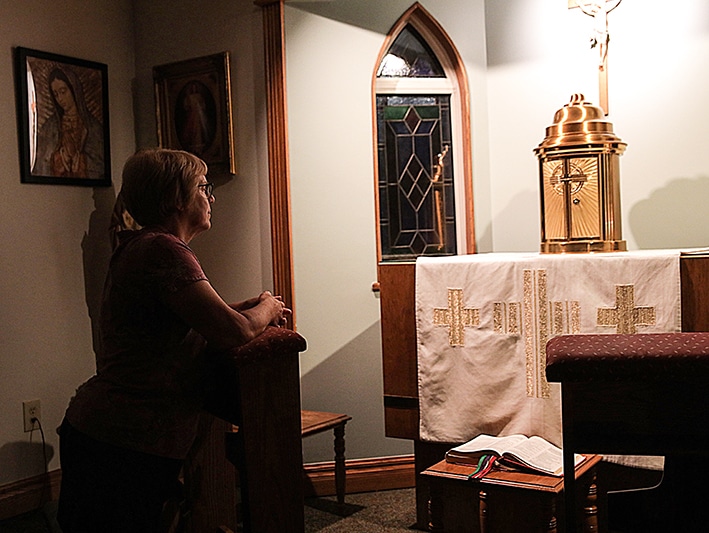
Do we know when the use of tabernacles to house the Eucharist began?
To answer your question, I will draw principally on Mario Righetti’s four-volume Storia Liturgica, volume 1, which offers a comprehensive treatment of the question.
The author begins by citing Canon 13 of the first Council of Nicaea (325), which prescribed that no one who was close to death should be deprived of receiving the Eucharist as viaticum. Righetti draws the obvious conclusion that the Eucharist must have been reserved somewhere in the church at that time, and probably for a long time before that.
He cites as evidence the case of Serapion of Alexandria, who in the middle of the third century, when close to death, received the Eucharist from a young man who had taken it to him from the local priest.
It is clear that in the first centuries, when the church was suffering fierce persecution from the Romans and there were few churches, the lay faithful kept the Eucharist in their homes, so they could receive Communion. They were instructed to keep it safe from infidels and animals, and to avoid any of it falling on the ground. St Cyprian, bishop martyr in North Africa in the third century, speaks of the laity safeguarding the hosts in a chest hidden in a wardrobe.
After the persecutions ended, the Apostolic Constitutions, a collection of norms of discipline, worship and doctrine written in Syria between 375 and 380AD, instructed deacons to deposit the hosts left over after Communion in a locked receptacle, or conditorium, in the pastophorion, or “bridal chamber” for Christ the bridegroom, located beside the altar. In the West, the pastophorium was called the secretarium or sacrarium. The hosts were to be wrapped in a white linen cloth.
Around the ninth century there is mention of a proper tabernacle, known as a propitiatorium, located at the back of the altar itself, in which hosts were kept in a pyx, a small vessel for taking Communion to the sick. Churches in France and Italy had this arrangement. In the 13th century, at least in France, the name tabernaculum began to be used. The Lateran Council of 1216 mentioned the propitiatorium, or tabernaculum, prescribing that it was to be kept locked with a key.
Another arrangement, dating back to the fourth and fifth centuries in both East and West, was the columba. This dove-shaped vessel, often made of pure silver or gold, was fastened to a plate which was suspended by chains from a canopy, or baldachin, above the altar. The canopy was called a ciborium, the name later used for the vessel in which hosts are kept in the tabernacle. A hinged door on the back of the columba opened to a cavity where the pyx was kept. The columba was often covered with a veil.
Another vessel for safeguarding the Eucharist, also dating to the fourth and fifth centuries, was a gold or silver tower, known by its Latin name of turris. In France the towers were relatively small and were kept in the secretarium, now called the sacristy, to be taken to the altar for Mass. In Rome they were much larger and were probably fastened to the altar itself. Around the 14th century towers became popular in northern Europe, where they were placed near the altar behind a metallic grate. Sometimes the host was visible behind glass, somewhat like the monstrances used today in exposition of the Blessed Sacrament.
After the 13th century, especially in Italy and Germany, the tabernacle was embedded in the wall of the church to the right of the altar. Often it had beautiful artwork, including angels adoring Our Lord, Christ emerging from the tomb, or Christ on the cross with his blood pouring out into a chalice.
From the 16th century on, the custom of placing the tabernacle at the back and in the centre of the altar became widespread. The tabernacles were often richly decorated, and they were required to be covered by a veil of the colour of the liturgical season or feast.
